GuidesStone Care Guides
Everything You Need to Know About Hone-Finished Stone Floor Care

Hone-finished stone floors add a touch of elegance to any setting. These floors are made of strong, long-lasting materials such as travertine and granite, which have been ground with abrasive pads. This makes them smooth, consistent, and flat. This blog post will discuss the maintenance of hone-finished stone floors in your residential or commercial building.
Cleaning Different Types of Stone Floors
Most of the time, there's no real difference between the cleaning process used for honed floors or polished stone floors. The major distinction is with the amount o force that can be used with honed floors. Since you don't have to worry about damaging a delicate polished surface, you can rub it harder with tough brushes or apply nylon pads while cleaning it.
Use Specialized Products with Honed Floors
Your hone-finished floors and other stone surfaces should always be cleaned with products developed, especially for such areas. Hone-finished floors should be cleaned with a honing powder, which is applied with a damp terry cloth. You can also use one of the quality commercial powders on the market, such as Comet.
Since a honed floor is resilient, you can use a variable-speed grinder to remove scuff marks as well. This is an efficient way of removing these markings on a large surface, such as an auditorium floor after a trade expo or business conference with lots of foot traffic. The polisher should be set to its highest RPM and used with a 7" white pad that's made of hard-wearing nylon.
Advice from Contractors
Before, during, and after the maintenance of a stone floor, contractors should advise customers that certain types of limestone and sandstone will need to be cleaned regularly. These types of stones will scuff more easily than others and, ideally, should be used in areas that have less foot traffic. Contractors should put this in writing so customers can be formally advised of that.
No sealers have been developed, which will prevent scuffing on certain types of limestone, and even a week after work is done, customers may see marks on the floor. Putting that in writing helps prevent contractors from being called in soon after maintenance to deal with this issue. There's no solution to this that a maintenance team can provide.
When working on a floor that has just been installed, contractors may want to suggest that a customer re-hones the entire floor. This is because the honing that is done at the factory is rarely of high quality. To look their best, these floors will need to be hone-finished by a team that focuses on providing this service.
Unfilled Honed Travertine
Unfilled honed travertine is honed at the factory level. However, it's not filled before the honing is done, and this results in the travertine having small gaps or holes. These small crevices give the travertine character, and many customers consider them to be attractive. However, this is a drawback during cleaning since honing powder can be trapped inside the holes.
It takes time to remove honing powder from the gaps in travertine after cleaning. To avoid the loss of this and other valuable resources, it's better to use an alternative method for cleaning unfilled honed travertine. The recommended method involves the use of honing screens instead of honing powder.
A carpet extractor working at 350 PSI can be used. You can also use any other machine that has an extractor feature. For example, those that are used by professional grout cleaners are helpful, and there are two popular types to choose from. One has a head that spins at a 45-degree angle as the water erupts from the nozzle, so it doesn't need a motor. The other is set at right angles and spins with the help of a motor.
Which Extractor is Better?
While an extractor that does not require a motor is more energy-efficient, those that aren't pushed by the force of the water are better for cleaning unfilled honed travertine. These allow the water to be pushed straight down into the holes so that the water force can push out any debris inside the holes. Instead of at an angle, a powerful jet that's coming directly in is more efficient at removing powder and other debris than a stream that's coming from the side, with less force.
The action of the extractor follows the action of the water with the motorized machine. This means you get a double action that loosens dirt, powder, and other grime. It's a precise tug and push that will move even the most stubborn particles that are stuck in gaps in the travertine. If you're considering time and want to finish the job and have the stone surface looking as clean as possible, using this type of extractor will help you achieve your goals.
Automatic Scrubbing Machines Better than Extractors?
Automatic scrubbing machines can be used with a wide range of floor types, and they have replaced traditional mops and buckets in many areas. They are used with cleaning solutions specially developed for the particular type of surface that is being cleaned and will also dry the surface in one pass. This means that you can deliver a clean, attractive surface to your customers more quickly than with some other maintenance methods.
Automatic scrubbing machines can be used with unfilled honed travertine, but extractors definitely have an advantage that may cause you to consider investing in them if you clean travertine. An automatic scrubbing machine does not offer the push-pull effect to quickly remove debris from the holes in unfilled honed travertine. You'll have to spend more time on the surface to get the look that you desire.
Customer Concerns about Unfilled Honed Travertine
Some of your customers may express concerns about how sanitary the holes in unfilled honed travertine may be. For some, these gaps may act as a breeding ground for all types of bacteria and other microorganisms. What can you say to reassure them, and are these concerns valid?
Any surface can serve as a breeding ground for microorganisms. In fact, every human being has many microorganisms living on their skin, and many of these have a beneficial role to play in health. The microorganisms that can live in the gaps of unfilled travertine can be removed regularly with cleaning.
Customers may want to consider focusing on regular cleaning for areas such as their kitchen, where food spillage can occur often. This type of deep cleaning may not be required as often in an area such as a sunny, enclosed porch, where any bacteria would often be eliminated with UV radiation. Unfilled honed travertine should not be used in kitchens and similar areas because of this risk, but it should be cleaned regularly if they've already been installed.
Sunrooms, bedrooms, and other such areas are good candidates for unfilled honed travertine. These are not high-traffic areas so that they won't be exposed to dirty shoes and other sources of stains. There's also less of a possibility of liquids being spilled in these areas.
Using Sealers with Hone-Finished Floors
Sealers will not completely prevent stains on hone-finished floors. In fact, they will get stained more easily than stone surfaces that have been polished, even when honed floors are sealed. It's important to reinforce this when you are working with a client, so they know sealing will not prevent these floors from becoming stained within a relatively short time.
Despite that, sealers help the floor to keep looking good. They protect the stone to an extent so it does not look dry and displays the type of luster that most people enjoy with a stone installation in their bedroom or living room. A quality sealer that's been designed specifically to penetrate and protect stone should be used.
When sealer is applied, a waiting period of two or three days is ideal. While this is a recommendation that is not always required with polished stone, it's usually best to follow it to the tee with honed floors that have been freshly sealed. Sometimes you will need to apply several layers of sealer. You will need to have time to gauge each new layer's effectiveness and decide whether it would be beneficial to add another.
This should be communicated clearly to your customers from the beginning. That allows them to plan for the curing time and not rush the process. While two applications are usually recommended, some honed stone surfaces will require three applications to look their best.
Sometimes you'll be told or see on a product's directions that layers of sealer should be applied with a waiting time of two hours between each layer. That is not ideal, and in most cases, you'll get the best results if you wait for a full 24 hours before you apply the next layer. Discuss this with your customers and work out pricing arrangements that cover the costs of coming back the next day to do another application.


